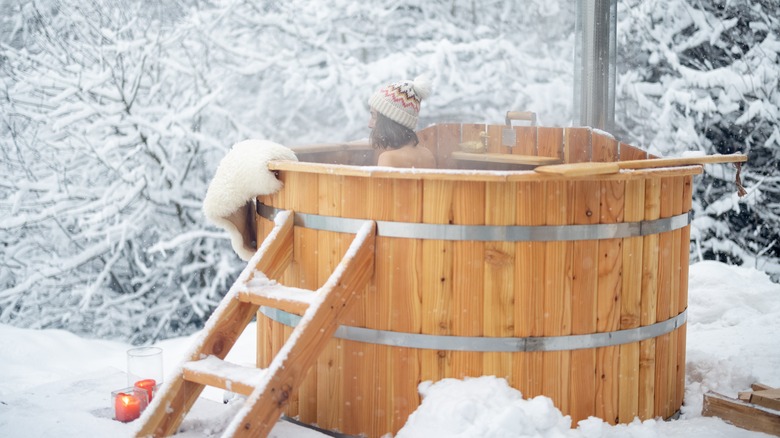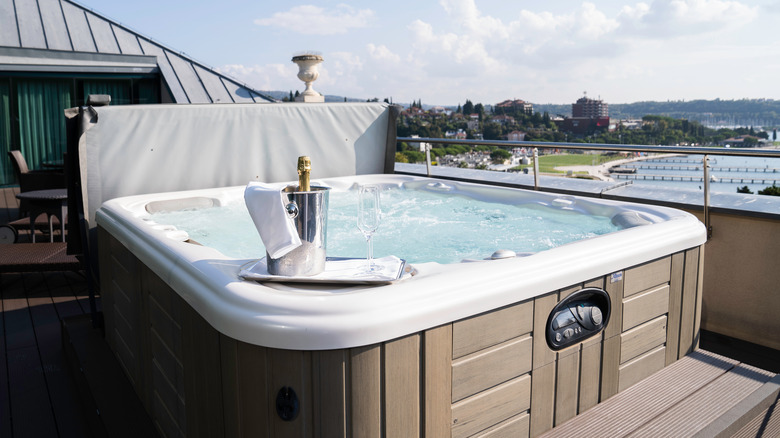The Subtle Differences Between Hot Tubs, Jacuzzis, And Spas
It's been said that the best route to productivity is relaxation. If you've ever taken a good soak in a hot tub, you know exactly what that means. Hot soaks are known as stress relievers, and they're great for easing muscle aches, too. According to Cleveland Clinic, some studies link heart health, lower blood pressure, and improved sleep to leisurely soaks.
Hot tubs also provide a great spot to share fun moments with friends, even in the winter. What's better than catching up over a cocktail or glass of bubbly and chilling out at the same time? If you like the sound of this and want to explore the idea more fully, you might also be wondering what the difference is between a hot tub and a jacuzzi. Also, where do spas fit in the picture? There are some similarities since they all hold hot water, but there are some key differences to consider, too.
The origins of the hot tub
Back in the 1960s, hot tubs were big, round vats of warm water made for soaking without jets or bubbles. They were constructed using wooden wine vats gleaned from vineyards in California and usually heated by an adjacent wood-burning fire. The rustic look of a true hot tub is appealing, but according to SpaDepot, old-style versions need frequent draining since they aren't filtered. They're also prone to leaks, and insects are attracted to all that wood. On top of all that, they aren't very energy efficient, and it's hard to get the temperature just right given their wood-burning nature.
Given the drawbacks, it's no wonder these are rarely made and used today. Updated wooden hot tubs with a retro vibe are being produced and sold today, with some with modern modifications, making them more attractive to consumers. Even so, the round wooden hot tub is not as common today as it was years ago.
The attributes of a modern jaccuzi
First, let's get some basic nomenclature out of the way. Hot tub, jacuzzi, and spa are all used interchangeably to describe the same thing. They're big, jetted tubs of warm to hot water with filters to keep them clean akin to swimming pools. However, it's important to note that jacuzzi is a brand name that has gone generic in the way that people often refer to all slow cookers as Crock-Pots. If you want to be correct, call it a spa or hot tub and reserve Jacuzzi for when you're soaking in that brand.
Jetted hot tubs come in all shapes and sizes, and the cost to acquire one varies. They range from holding just a few people to models that accommodate a party of 12. They have jets that can be controlled to bubble a little or a lot and temperature controls to get the water just the way you like it. They can also sit above ground or be built-in, often adjacent to a pool or within a deck.
The above-ground types are generally referenced as portable hot tubs or spas since they can be moved from place to place. The shapes vary widely, including round, oval, square, and rectangular, as noted on Modernize. Other features like LED lighting in spas can set the mood for nighttime gatherings. With such versatility and variety, it's no wonder that spas like these largely replaced the old-style wooden hot tubs popular decades ago.


